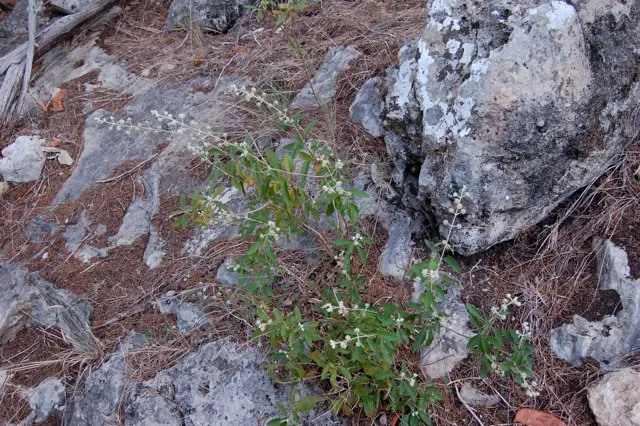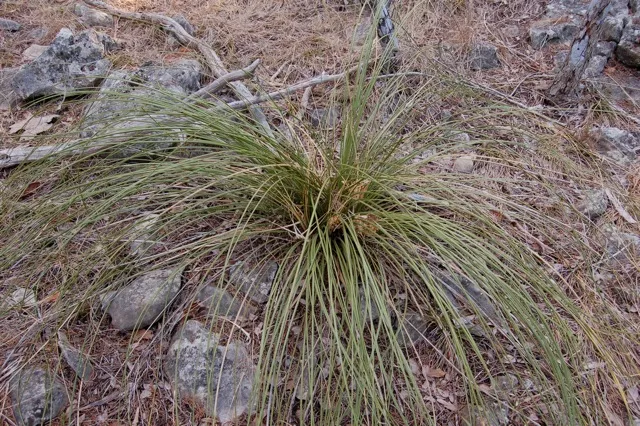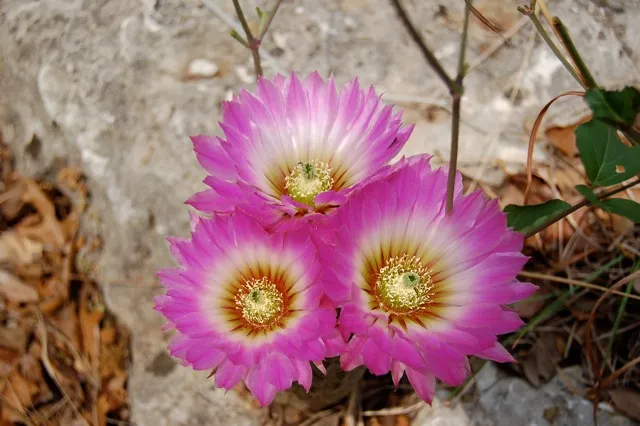By Delmar Cain
With our serious drought now extending into the tenth month in the Hill Country, I am beginning to wonder what would constitute a normal weather year in Boerne. It seems since we moved here in 2005, the area has been having either a drought or above average rainfall. If I didn’t know better I would think that Mother Nature is just daring me to try and plant something new. If I plant something in the sun, it turns crispy. But if I put it where it might get intermittent drainage, it gets drowned. Thank goodness our lot has plants that Mother Nature planted herself. Even though I know that by their existence she is constantly reminding me of her vast superiority as a gardener, I am glad to have them.
Although we did have a bit of rain on June 22nd, I am not getting my hopes up that this drought has ended. Consequently, I thought that it might be in order to discuss a few native plants that can be found in rocky areas with thin soil and that are surviving on our lot so far without supplemental watering. You might have such a spot at your house.
Agarita (Berberis trifoliate) is not hard to find in rocky dry ground in our area. It can grow up to 6 feet tall and has fragrant yellow flowers in the early spring followed by red berries. Butterflies will nectar on the flowers and wild turkey make short work of the berries. The deer may nibble some of the new growth but not for long. The stickers on the leaves make a good defense. The Texas Forest Service discourages planting agarita too close to a structure since it burns very rapidly, but it makes a nice hedge or a security plant.

Wand butterfly bush (Buddleja racemosa) is a perennial, which grows only in the Texas Hill Country along limestone cliffs or on steep banks. It grows up to 3 feet tall, has creamy white ball-like blossoms in the summer and is very heat tolerant. The Texas A&M Aggie Horticulture website indicates that the shrub can be found in the Edwards Plateau along the Devil’s River in Val Verde County. However, Bill Carr, a botanist with The Nature Conservancy, identified the plant for me on a nature walk along Spring Creek in Kendall County and he also found it at another location near Pipe Creek in Bandera County. Texas Parks and Wildlife indicates that it is also a good nectar plant for bees and butterflies. The deer do not browse it on our lot.

Beargrass (Nolina texana) looks like a round thick clump of coarse grass. It is not a grass but is classified in the agave family. It can be seen growing along our rural roads on ledges and rocky slopes. It is evergreen and its long thin leaves only 1/4 inch wide at the base can drape 3-4 feet when mature. It blooms in the spring with white to cream-colored tiny flowers on stalks that emerge from the clump. Its long thin leaves provide a look that is a good contrast when planted next to broad-leafed plants or to cacti.

The last plant is one of my favorites–the white lace cactus (Echinocereus reichenbachii). It can be found growing in sandy or limestone soils in a wide area in the middle of Texas from the Rio Grande northward to the Panhandle. It may have either a single stem or its diffuse roots may support branching stems. A mature plant will not be much larger that 5-6 inches tall and 3 inches in diameter. The white lace cactus is easily planted in areas with very little soil and when established requires no further care. Its bloom in the spring is short–1-2 days, but oh what a bloom. The flowers on the plants at my house are deep pink and glisten so that the petals give the appearance of being delicately carved from pink ice. The interior of the flower has reddish filaments, creamy anthers and green stigma. Like most cacti it has spines, but ncan be easily handled with gloves.
As I indicated the plants above have survived in reasonable condition at our house with no supplemental watering. They are plants for you to consider in the future, because planting anything under the present conditions is risky. Three of the above are locally available. However, after writing this article I was unable to verify that any of our local nurseries have wand butterfly bush in stock, although a plant from the same family, wooly butterfly bush (Buddeja marrubifolia), which grows further west is available. I think that correcting this situation sounds like a good project for our local Native Plant Society of Texas (NPSOT) growers.


